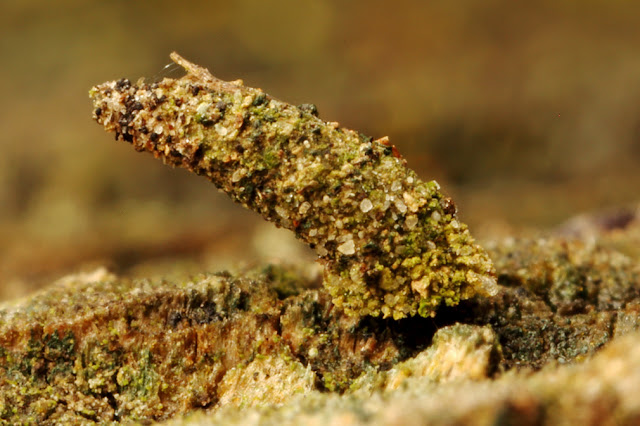This was how we saw out January here in darkest Kent...
With daytime temperatures like this...
But the weather in this part of the world has been exceptional for a while now, and on yet another fine February day that evoked Robert Browning poetry, I ventured out with the macro lens to see what I could find...
Dunno, but here's another one...
Actually I do know. At least, I have some idea. These are Bagworm moth larvae of the Psychidae family.
The larvae of Psychidae construct cases out of silk and environmental materials such as sand, soil, lichen, or plant materials. These cases are attached to rocks, trees or fences while resting or during their pupa stage, but are otherwise mobile.
A bagworm begins to build its case as soon as it hatches. Once the case is built, only adult males ever leave the case, never to return, when they take flight to find a mate.
In the larval stage, bagworms extend their head and thorax from their mobile case to devour the leaves of host plants.
And yes...there is a caterpillar inside of those strange constructions; here's another, larger one that I found...
Just to prove that it was moving around; I tried to get a little video, but this was at about x3 mag using the MP-E 65mm macro lens and natural light. Holding it steady and getting the camera to focus was not easy. In fact, almost impossible.
Warning: This video may not appear in emailed versions of my blog...
(Apologies for the 'up next' notification at end of video. The option to remove this has been removed by YouTube recently.)
(Apologies for the 'up next' notification at end of video. The option to remove this has been removed by YouTube recently.)
Shall we have another from the...
Okily, dokily!
Issus coleoptratus is a species of planthopper belonging to the family Issidae.
This is an early/mid instar, which means it has a lot of growing to do yet. The adult hopper will have a totally different appearance...
 |
| Adult Issus coleoptratus hopper |
My mantra on these bug walks is 'One good find', I always tell myself that if I have one good find, I can regard it as a successful day. And this next photograph demonstrates just that: my one good find. Although to be fair, I was rather pleased with all of my finds, anyhow, here it is...
This one is Leptolossus occidentalis, a Western Conifer Seed Bug. A large, impressive squashbug. In fact so large that I struggled to fit it all in the viewfinder. It is not a native bug and was first detected in the UK in 2007. I think they must be well established here in Kent now. This is the third location I have found them at.
 |
| The long legs with twin claws |
I think this is an inebriated Soldier Fly larva. If not intoxicated, definitely legless.
Possibly another fly larva but i'm not even convinced that is correct.
I will take my leave of you with this walking hard hat...






















































